Late summer viewing, part two: Thrills and Chills
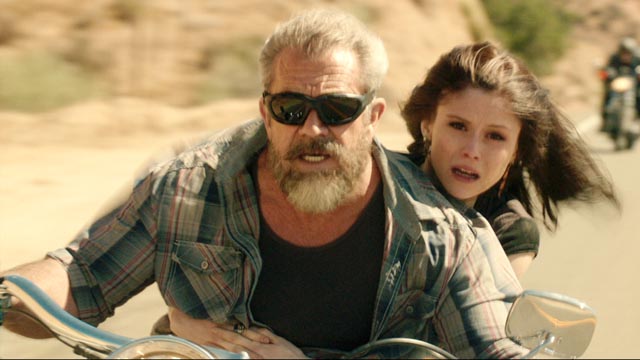
Blood Father (Jean-François Richet, 2016)
Last week I wrote about Lynne Ramsay’s You Were Never Really Here (2017), a film whose artful style couldn’t conceal its adherence to somewhat tired genre tropes. Jean-François Richet’s Blood Father (2016) makes no attempt to disguise itself, but rather embraces its generic elements – most specifically the presence of Mel Gibson as an isolated loner, haunted by past failures, who is revivified when that past comes calling for help.
Gibson as John Link, an ex-con now living in a run-down trailer park on the edge of the desert, gets a call from his estranged daughter who has become involved with vicious drug dealers connected to a Mexican cartel. When the gang comes looking for her, destroying Link’s trailer in the process, they reawaken the violence that’s been barely suppressed and he sets out to track down and destroy not just the branch of the cartel operating in New Mexico, but the head guys back in Mexico as well.
Richet is proficient with the bloody mayhem and manages to get good performances from the cast. Gibson, of course, elicits conflicting feelings in the viewer – with his prominent history as a racist, sexist adherent to a primitive Catholic sect who has very public anger management issues, he is an unappetizing human being … but there’s no denying that he’s very good at what he does, drawing here on his cinematic past as Link embodies both Mad Max and Martin Riggs, seeking some kind of redemption by saving his daughter.
Blood Father is an entertaining B-movie, its entertainment value varying according to your Mel Gibson tolerance level. (Lionsgate Blu-ray: brief making-of featurette.)
*
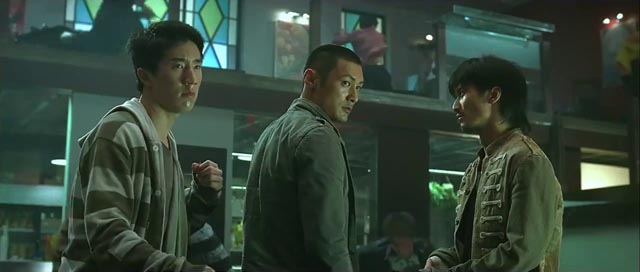
Invisible Target (Benny Chan, 2007)
Asian action movies always have an added appeal because of the qualities which differ from Western traditions, which include both cultural inflections and a willingness to push bone-crunching action to extremes. No matter how elaborate the stunts performed by Tom Cruise in his spectaculars, you just know how extensive all the safety measures taken are; but in Japanese, Thai, Korean and Chinese action movies, you often get the impression that real bones are being broken. Even though this has gradually been diluted by the increasingly extensive use of CGI in Asian movies, they still often possess a visceral quality typically missing from Western action.
Which is not to say that Asian movies aren’t often as generic in terms of narrative as Hollywood movies. Benny Chan’s Invisible Target (2007) pits three conflicted cops against a vicious criminal gang who make a habit of slaughtering police and bystanders at their robberies. Detective Chan Chun (Nicholas Tse) has a personal motive for going after the gang: his fiance is one of the victims during the opening armoured car robbery. Inspector Carson Fong Yik Wei (Shawn Yue) is a cop dedicated to the law, and earnest young Officer Wai King Ho (Jaycee Chan, Jackie’s son) is struggling under the suspicion that his older brother, also a cop, has turned bad – maybe he has joined the murderous gang, or maybe he is deep undercover.
Though it runs over two hours, Invisible Target is fast and furious, seldom letting up as it balances large-scale action sequences with bone-crunching one-on-one encounters. Nothing about it is particularly original, but Benny Chan orchestrates the mayhem with skill and the action is satisfying in and of itself. (Alliance Blu-ray: commentary, deleted and extended scenes, multiple interview and behind-the-scenes featurettes.)
*
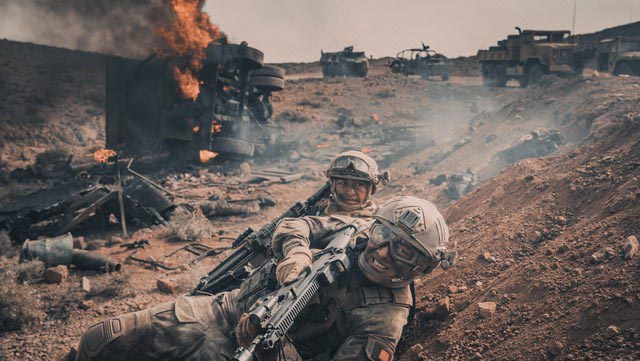
Operation Red Sea (Dante Lam, 2018)
Dante Lam’s Operation Red Sea (2018) is fascinating as a glimpse of how China views itself, as opposed to how the West views China. A combat epic, it bears a strong resemblance to both Ridley Scott’s Black Hawk Down (2001) and Michael Bay’s 13 Hours (2016). Filmed on location in Morocco (and set in fictional Ihwea), it purports to be “based on actual events”. Like many such Western movies, it skimps on political background – we’re not sure what has created the conflict or what the nature of the Chinese presence in the country is – but in the midst of some kind of coup, Chinese employees of an oil company are taken hostage and a unit of Marines is sent on a perilous mission to rescue a woman executive. As in most such movies, the unit has to fight their way deep into the country and many lives are lost in order to save one.
What’s interesting is that the film exhibits the same overall attitude we see in so many American movies of the genre: the imperialist nature of the Chinese presence and the outrage of Chinese nationals being threatened by the native (Islamic) population are never questioned. The dedicated Chinese soldiers are noble, resourceful and self-sacrificing, the North Africans generally a less civilized and unjustified population – though Lam never quite reduces them the way Scott turned the Somali population into the equivalent of Starship Troopers’ bugs.
As a combat epic, Operation Red Sea is quite impressive, although the action is at times unclear. What stands out is that the Chinese view their own imperial activities in places like Africa in essentially the same terms as Americans view similar U.S. activities – as righteous and justified. (Well Go USA Blu-ray: deleted scenes.)
*
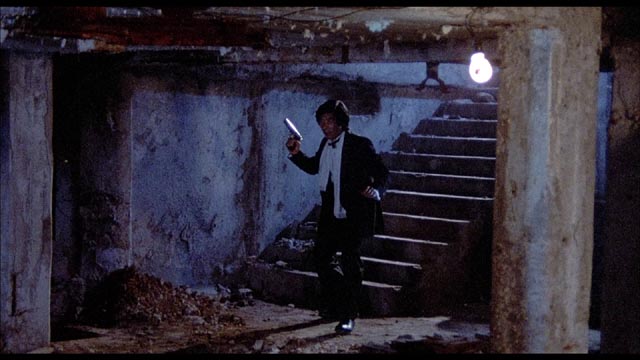
Rage of Honor (Gordon Hessler, 1986)
Asian-style stories and action were widely appropriated in the 1970s and ’80s, particularly in the wake of Bruce Lee’s international breakthrough, Enter the Dragon (Robert Clouse, 1973), but few Western directors were able to capture the particular flavour which made the original movies so distinctive. Shô Kosugi became a minor star in American martial arts movies which often centred on ninjas, beginning with Menahem Golan’s Enter the Ninja (1981) and peaking for trash genre fans with Sam Firstenberg’s deliriously absurd Ninja III: The Domination (1984).
Kosugi’s limitations as an actor are fully exposed in Gordon Hessler’s Rage of Honor (1986). Hessler didn’t have a particularly notable career. He started off with American-International period horrors in the late ’60s, when the genre was already pretty much played out – The Oblong Box (1969), Cry of the Banshee (1970), Murders in the Rue Morgue (1971). As a director, he did have some sense of style which makes some of his early work a bit more interesting than AIP required (though the studio re-cut Rue Morgue after it was delivered, making it more ordinary than Hessler intended). My personal favourite among his movies is the enjoyably deranged Scream and Scream Again, which he made for Amicus in 1970.
After this brief run of horror movies, Hessler mostly worked in television – movies-of-the-week and series episodes – and by the time he made Rage of Honor he didn’t seem to have much in the way of style left. Despite being set in Phoenix and Argentina, locations are generally as uninteresting as the plot, which deals with a U.S. DEA agent who makes a mess of a drug bust in South America which results in a bunch of deaths and then, suspended by his bosses, goes after personal revenge when his partner is killed. Kosugi has almost zero charisma as the agent, his romance with blonde Jennifer Lane (Robin Evans) one awkward scene after another. Lewis Van Bergen, however, plays the villain with enthusiasm, which breathes a bit of life into what is overall a dull movie. Hessler shoots most of the action (choreographed by Kosugi) without much flair. (Arrow Blu-ray: interviews with Kosugi and composer Stelvio Cipriani, featurette on 1980s Ninja movies.)
*
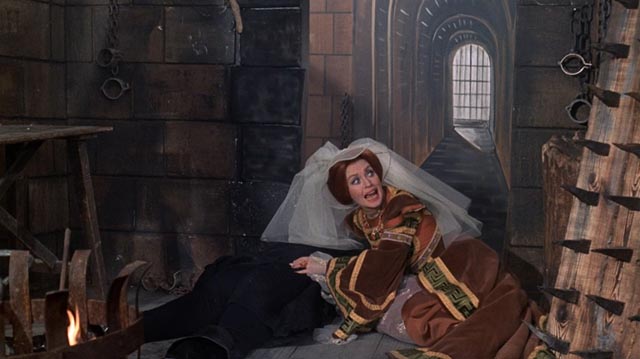
Murders in the Rue Morgue (Gordon Hessler, 1971)
Returning to Hessler’s earlier work after the disappointment of Rage of Honor, I picked up a Scream Factory double-feature Blu-ray which includes the now-standard 98-minute Hessler cut of Murders in the Rue Morgue (1971), which has little to do with Poe’s story. The script by Christopher Wicking (a frequent collaborator with Hessler) and Henry Slesar is closer to a variation on Phantom of the Opera, setting its action in a Parisian grand guignol theatre which stages a play about torture and murder featuring an enraged gorilla (substituting for Poe’s killer orangutan).
The theatre is run by producer-star Cesar Charron (Jason Robards, reportedly not happy to be working in this kind of trash), who is married to leading lady Madeleine (Christine Kaufmann). When someone starts killing off members of the company, Inspector Vidocq (Adolfo Celi) investigates and we eventually learn that Charron was once in love with Madeleine’s mother (Lilli Palmer), who in turn was in love with another actor, Rene Marot (Herbert Lom). Charron, in a fit of jealousy, substitutes real acid for water during a performance, making her disfigure Rene at the climax (giving Lom a chance to reprise his turn as the Phantom in Hammer’s 1962 film of the Gaston Leroux story). Meanwhile Madeleine is haunted by dreams in which a masked man kills her mother with an axe.
Wicking and Hessler create layers of narrative and artifice – the staged horrors in the theatre, the series of murders occurring on and off stage, Madeleine’s dreams/memories of murder, possible flashforwards – all of which produce an effectively Gothic atmosphere of murder and perversion, much of which was ruined by AIP when they shortened the film and laid a heavy red filter over the dream/flashback/flashforward elements. While not a great movie, Hessler’s cut is one of the more interesting pseudo-Poe films released by the studio. (Scream Factory Blu-ray: commentary track with film historian Steve Haberman and behind-the-scenes featurette.)
*
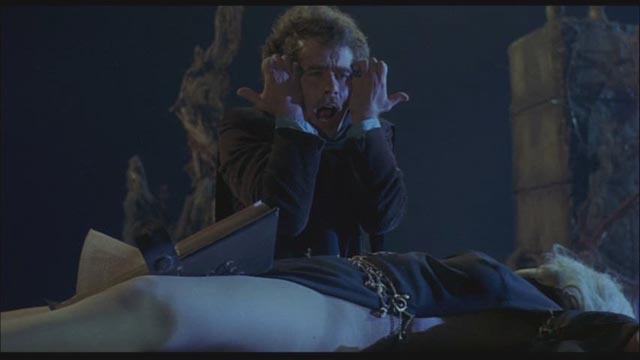
The Dunwich Horror (Daniel Haller, 1969)
The second movie on the disk is Daniel Haller’s The Dunwich Horror (1969), the second of his Lovecraft adaptations for AIP; his first feature was Die! Monster, Die! (1965), starring Boris Karloff, which was based on The Colour Out of Space. Haller got his start as an art director and production designer, largely responsible for the look of most of Roger Corman’s Poe movies, from House of Usher (1960) to The Tomb of Ligeia (1964). Corman’s influence is apparent in Haller’s early movies – the two Lovecraft adaptations, plus Devil’s Angels (1967) and The Wild Racers (1968) – but he eventually went into television work after a final theatrical feature about a priest’s crisis of faith, based on a novel by William E. Barrett (Lilies of the Field).
The Dunwich Horror name-checks many elements of Lovecraft’s fiction – the titular New England town, the Whateley family, the Necronomicon, the Great Old Ones and Elder Gods, and nihilistic attempts by occult-obsessed characters to bring the latter back into our world despite the prospect of destroying or at least enslaving the entire human race. But these are all unexpectedly embodied in actors who seem far removed from Gothic horror – namely Dean Stockwell as a brooding Wilbur Whateley, who needs the rare edition of the Necronomicon held by the library at Miskatonic University in Arkham to further his occult ambitions, and Sandra Dee (Tammy and Gidget herself) as Nancy Wagner, a student librarian at the University who falls under Wilbur’s hypnotic spell and ends up on a clifftop altar with the evil book propped in her crotch as Wilbur incants in an effort to open a way between this world and the other, in the process releasing his monstrous twin brother – who unlike him, takes after his other-worldly father – from the attic of the family home.
Although the movie lacks the dank and gloomy atmosphere of Lovecraft’s writing, it’s an entertaining supernatural tale which whips up an almost-apocalyptic finale as the shapeless brother sweeps across the countryside like an infernal wind laced with psychedelic flashes of colour, while the forces of good led by occult expert Dr. Henry Armitage (Ed Begley) rush to save Nancy and slam the door shut again. (Scream Factory Blu-ray: commentary track with film historian Steve Haberman.)
*
Recent reading
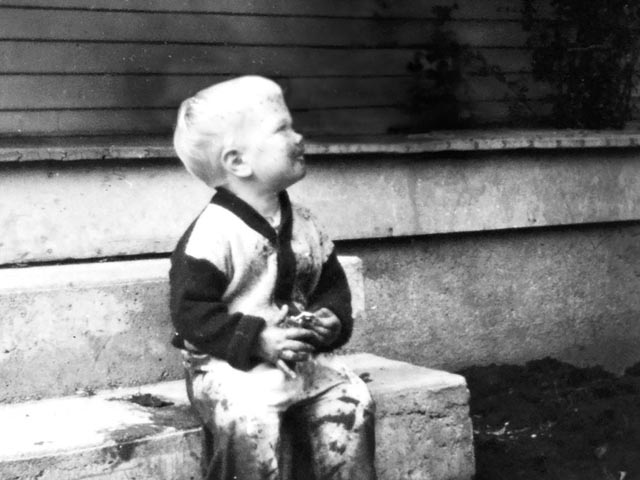
I mentioned a while back that I’d started reading David Lynch’s memoir/biography Room to Dream. As these days I mostly read during my commute to work, it took a while to finish, but I thoroughly enjoyed it – my initial slight misgivings disappeared as it progressed. Alternating chapters written by Kristine McKenna, who conducted many interviews and offers an objective account of events in Lynch’s life, with stream-of-consciousness reminiscences by Lynch which respond to and riff on those accounts, it provides an interesting view of his work and the ways in which he stands outside of mainstream filmmaking, operating in an idiosyncratic and highly intuitive way.
I also felt somewhat vindicated. Years ago academic Martha P. Nochimson took me to task for painting too rosy a picture of the making of Eraserhead. The story I told reflected what I heard from Lynch’s collaborators, all of whom were very positive about the experience (despite the hardships they endured during the protracted production), and all were very fond and protective of Lynch himself. That same atmosphere of affection and respect is expressed by everyone McKenna interviewed, even those who objectively may well have felt hurt by Lynch’s behaviour over the years.
There’s something about him which disarms and defuses conflict and resentment. Yes, as a self-absorbed artist he might tend to take rather than give … and yet he’s also extremely open and generous. I experienced that myself, first in the time I spent researching my account of Eraserhead, and then when he responded to my tentative request to work on Dune by landing me an amazing job on the production which took me to Mexico for six months – despite having no actual qualifications for the work I was doing.
The book is full of references to people to whom Lynch gave similar opportunities, altering the course of their lives. Despite my interest in film, I’m not sure I would have ended up a filmmaker myself if I hadn’t had that experience in Mexico. I didn’t end up in Hollywood or the commercial industry – most of my work has been in documentaries – but working on Dune, as unexpected as it was, did make a film career at least seem feasible.
Comments